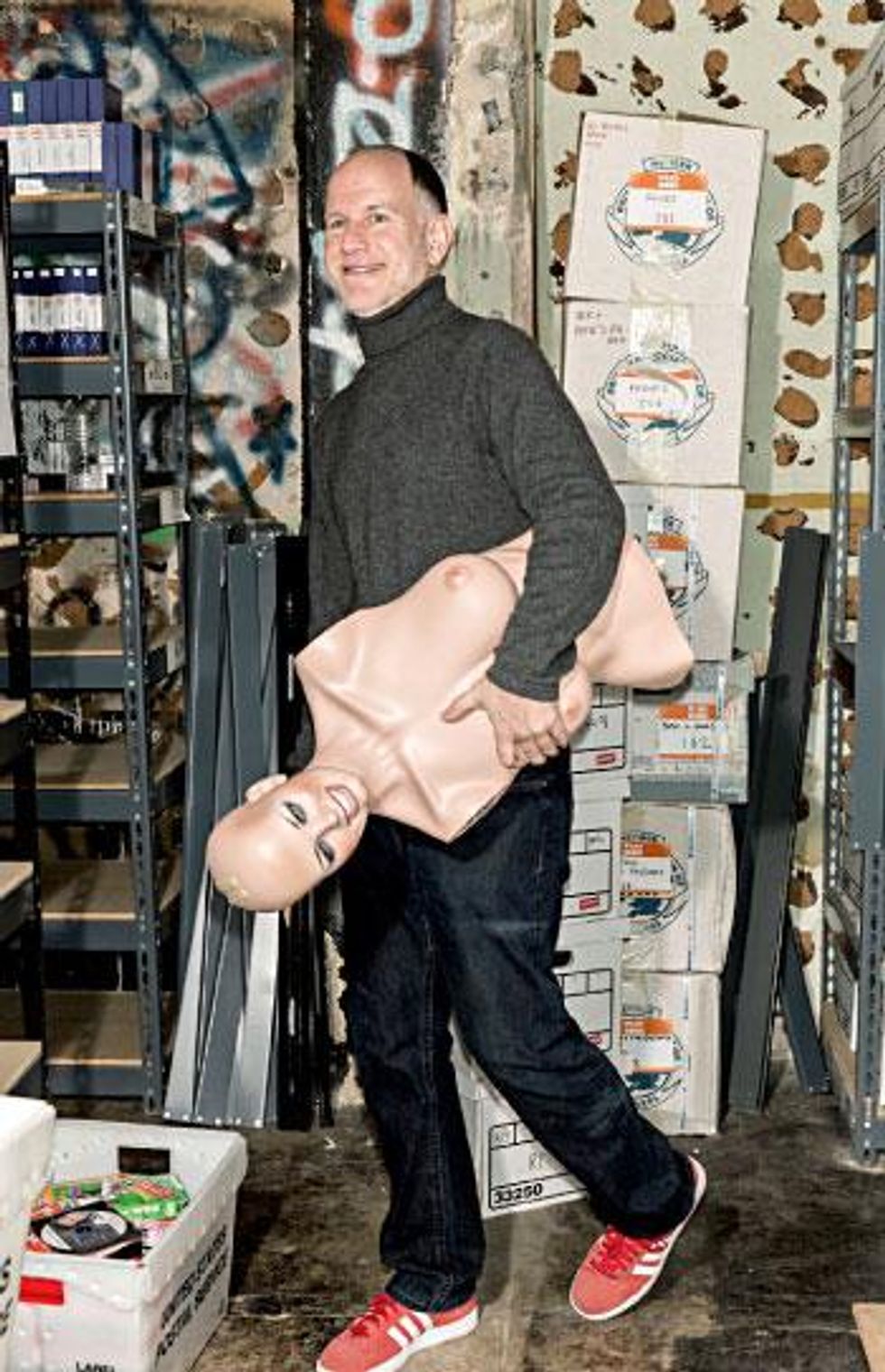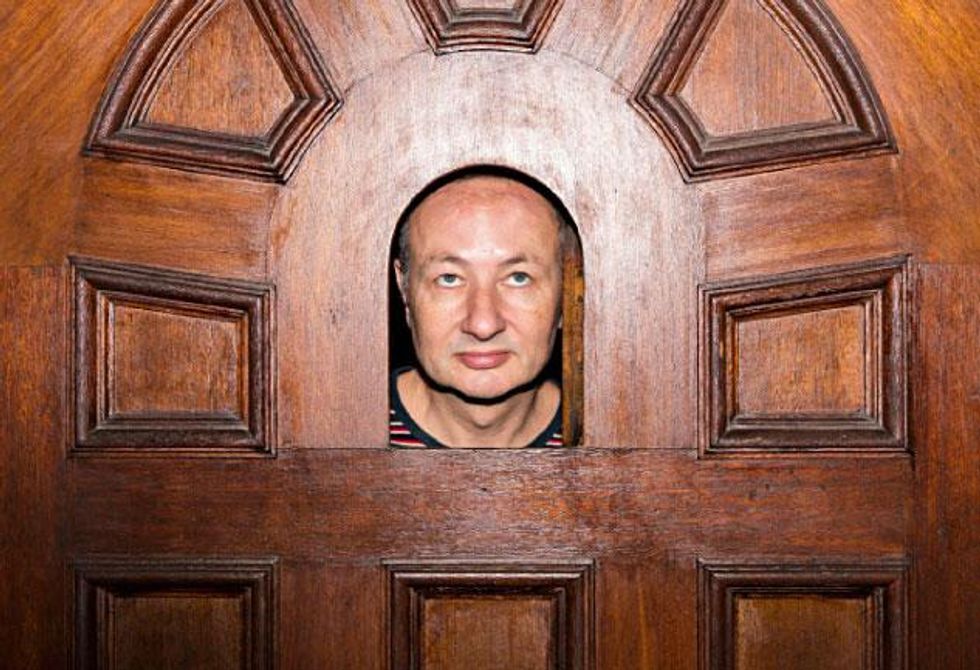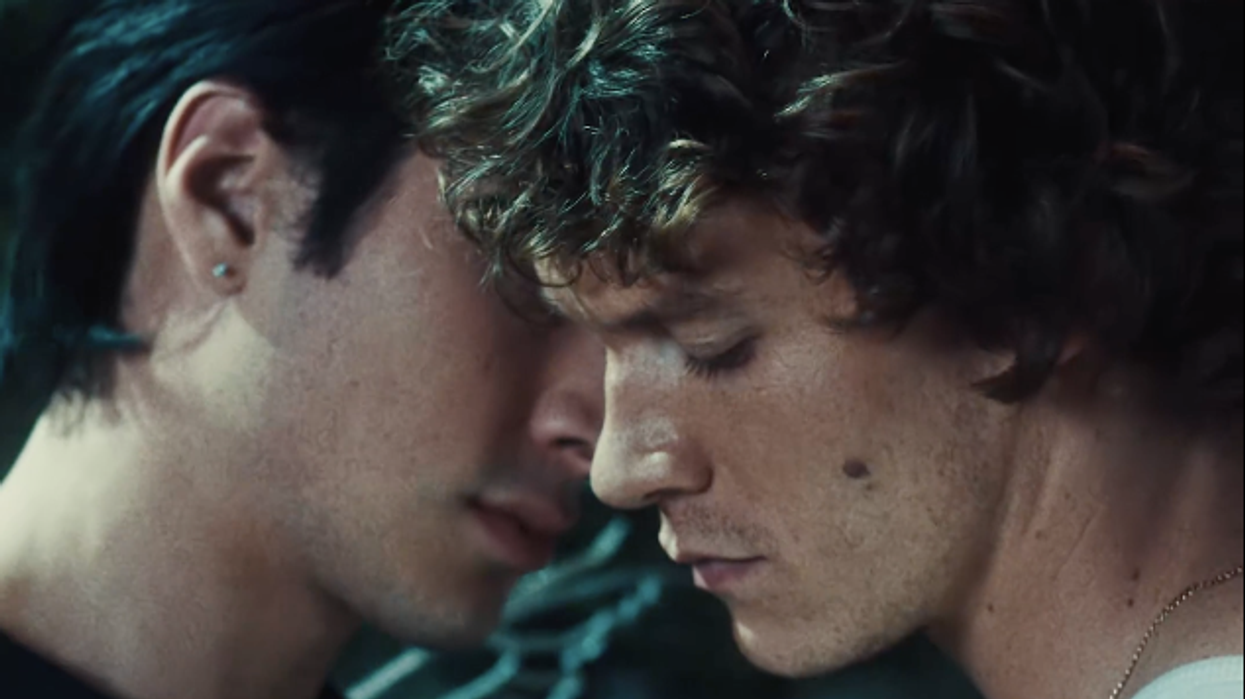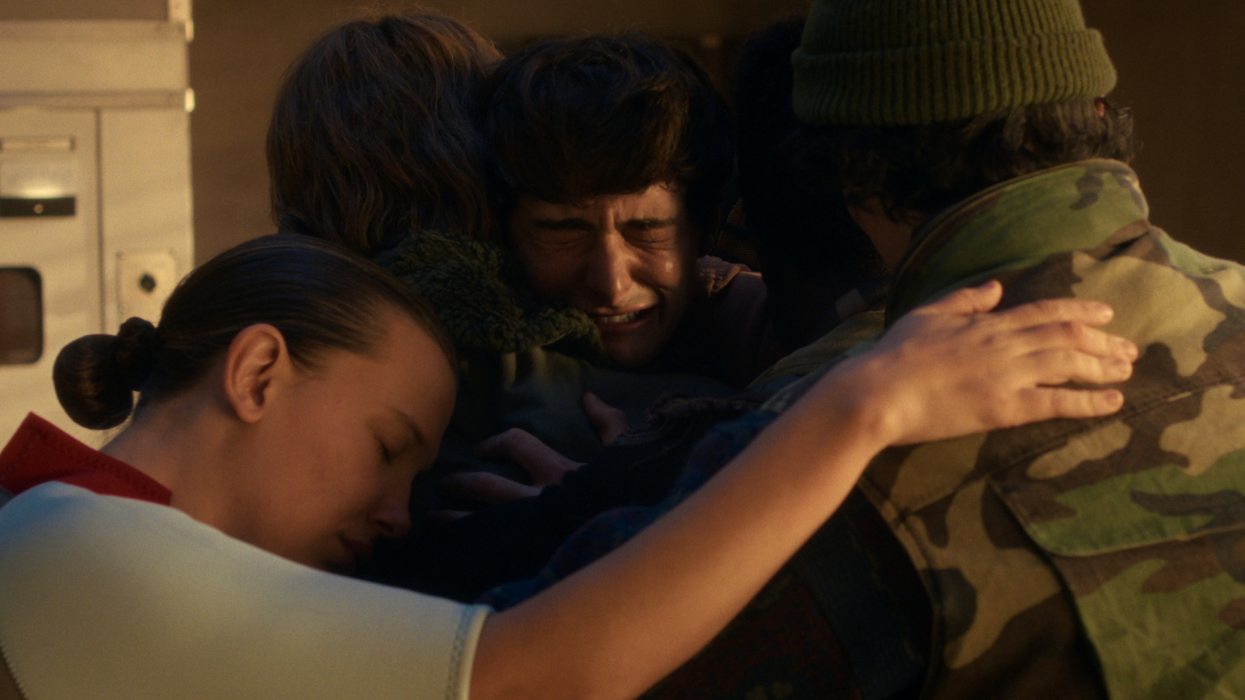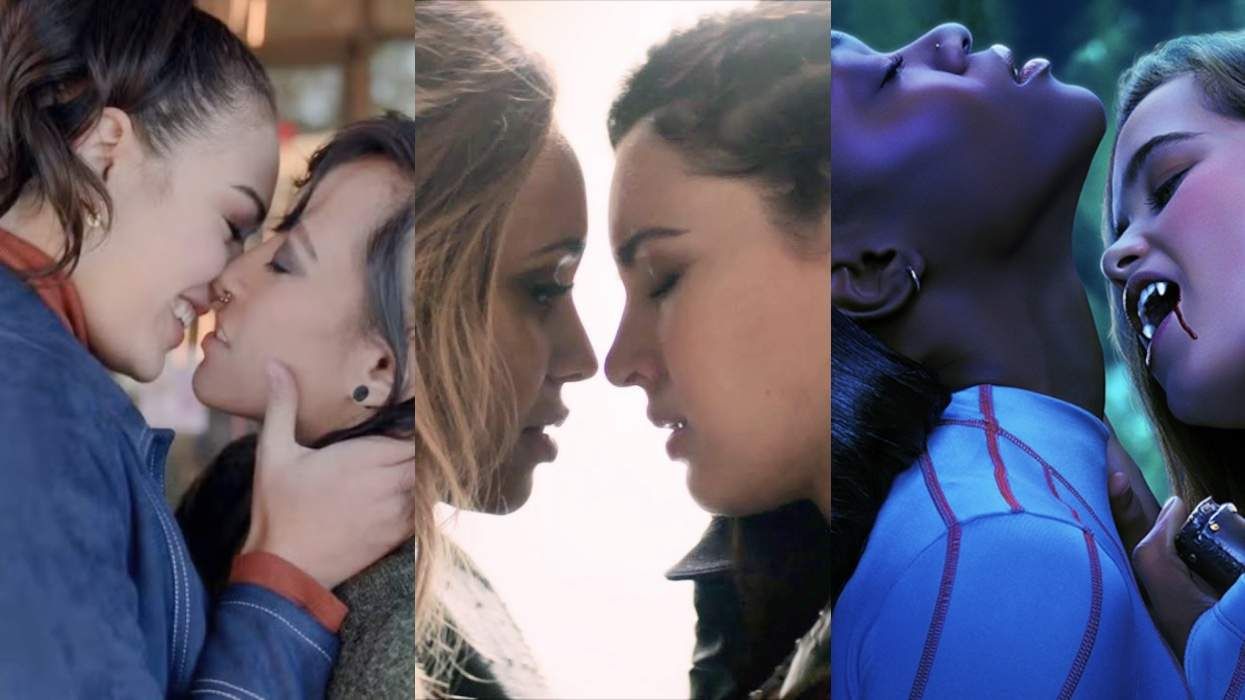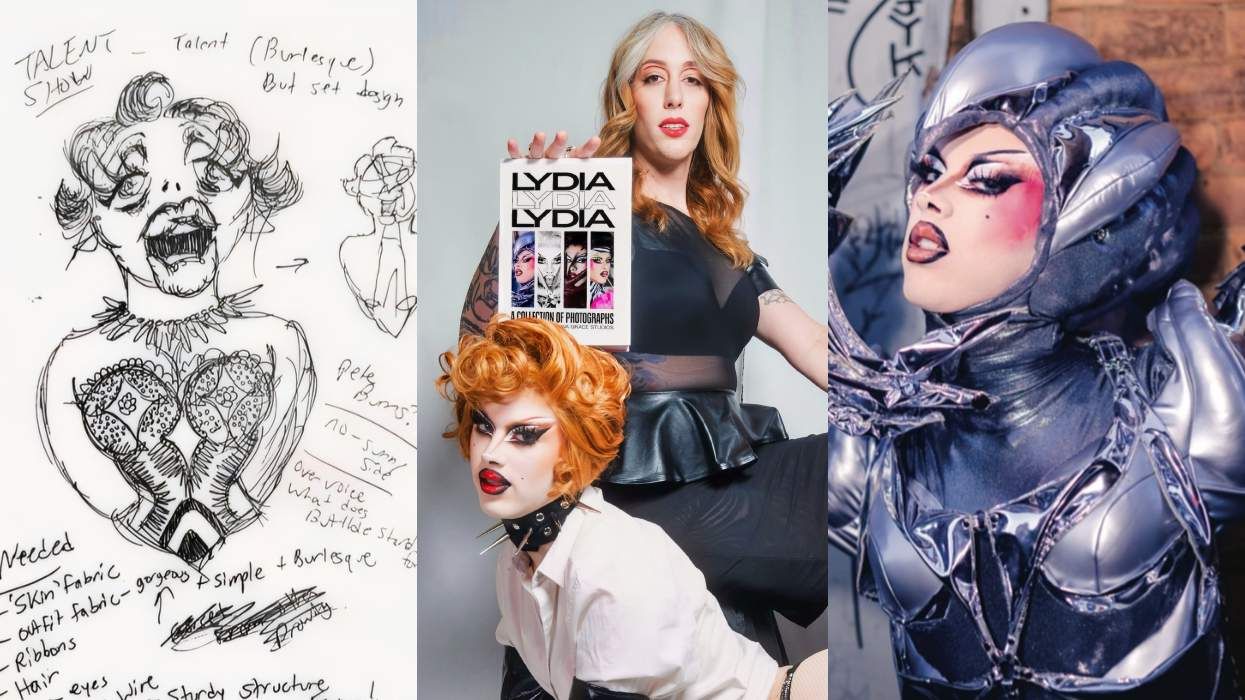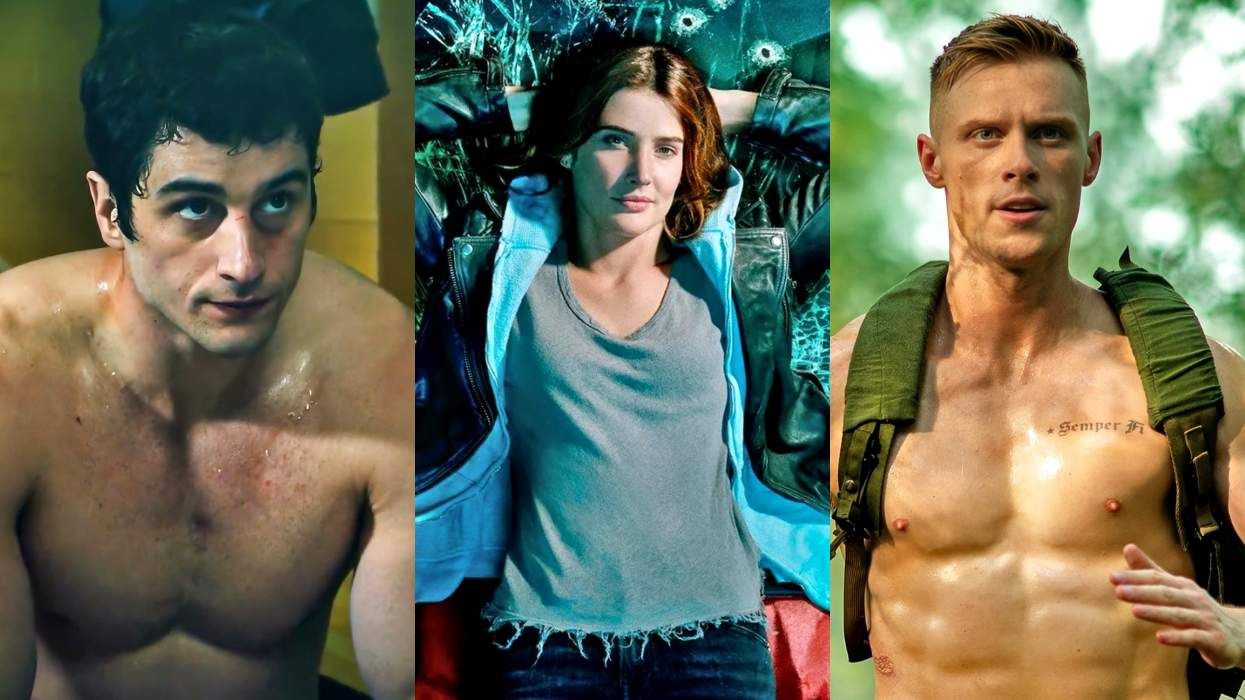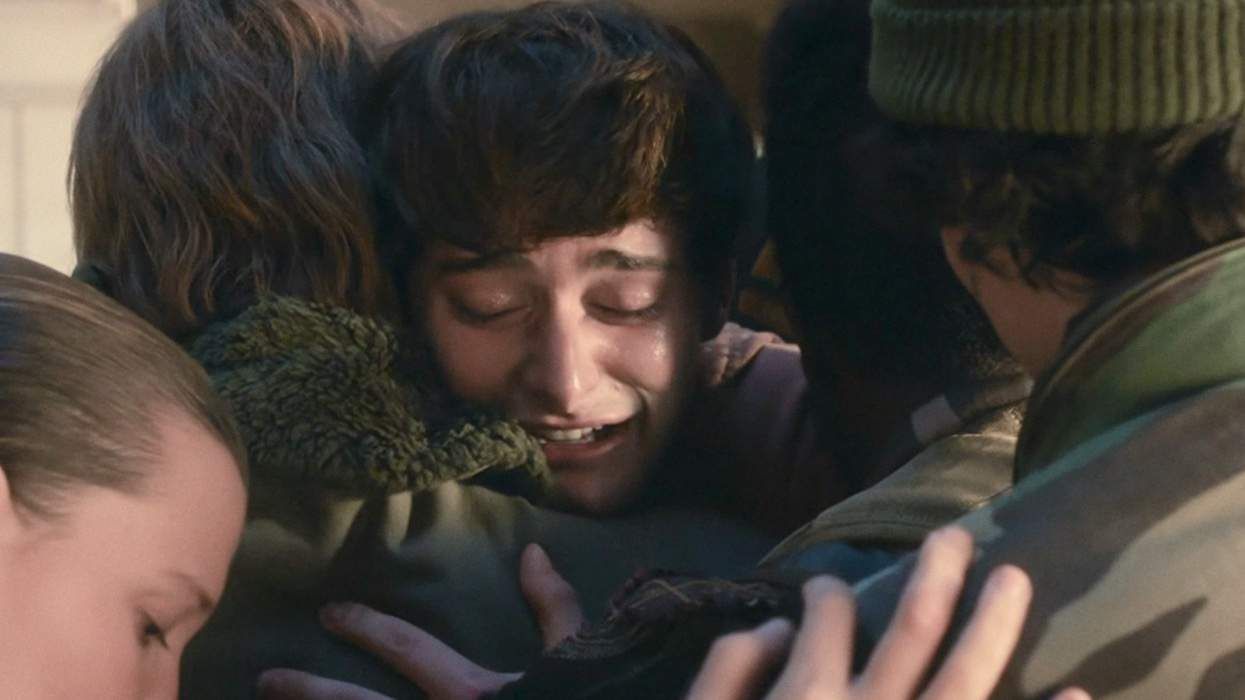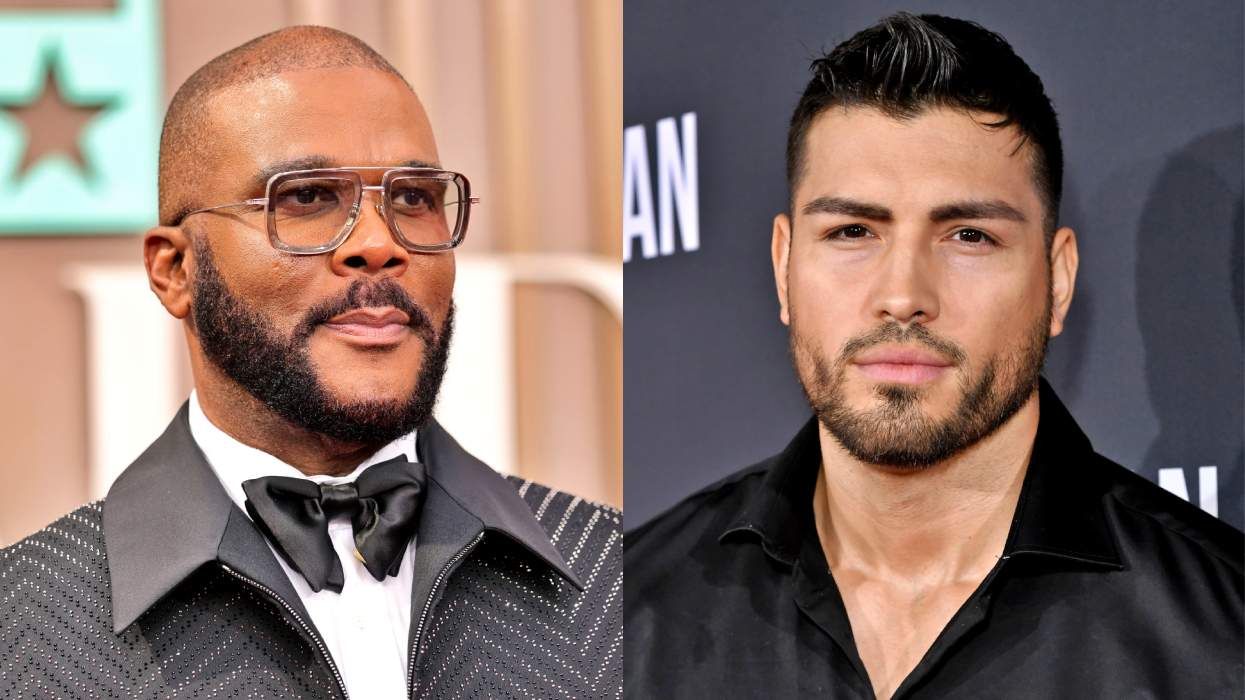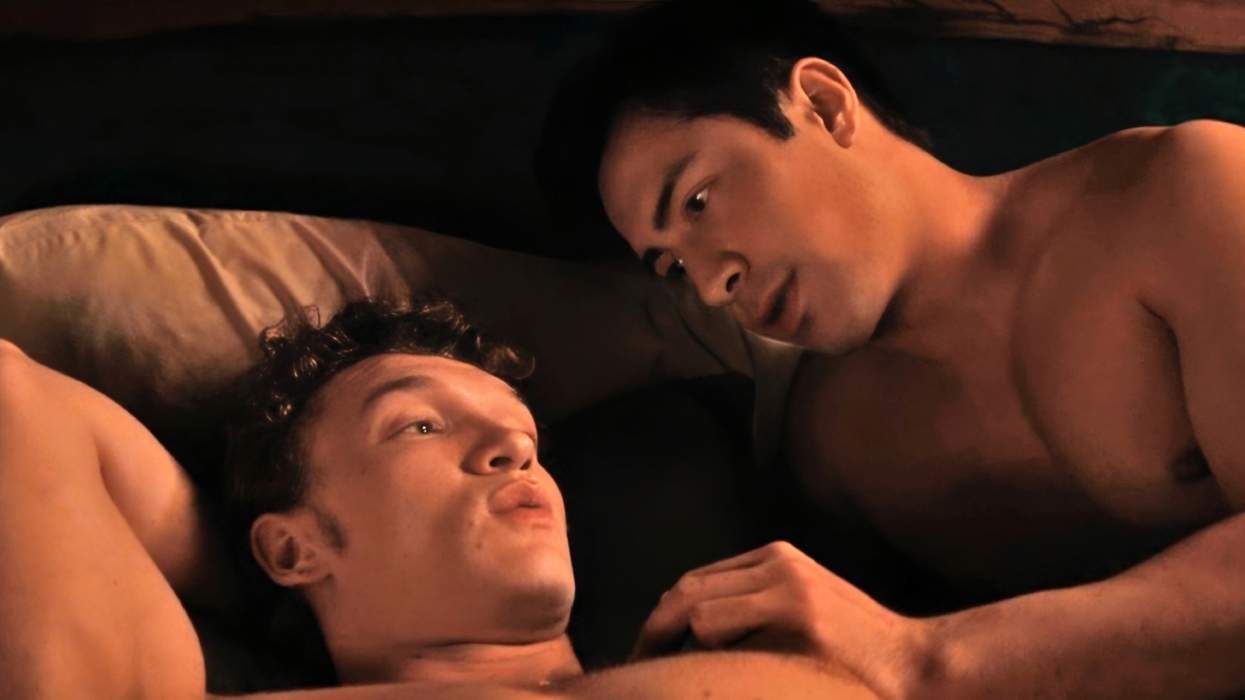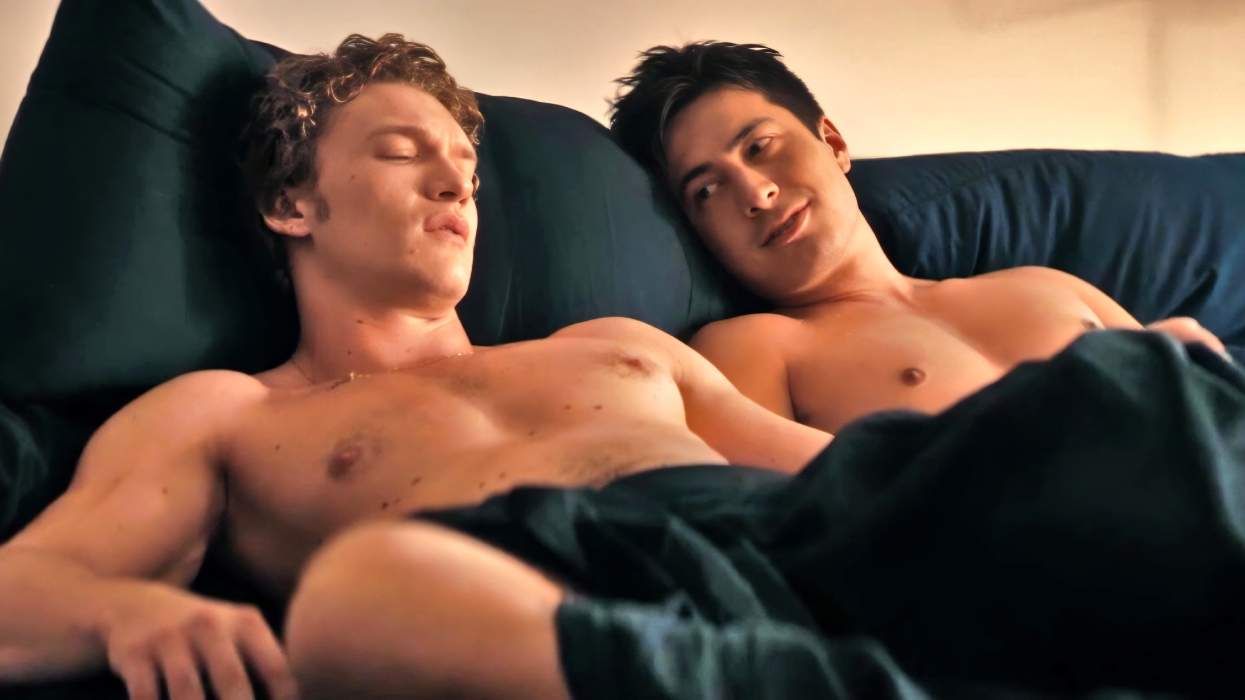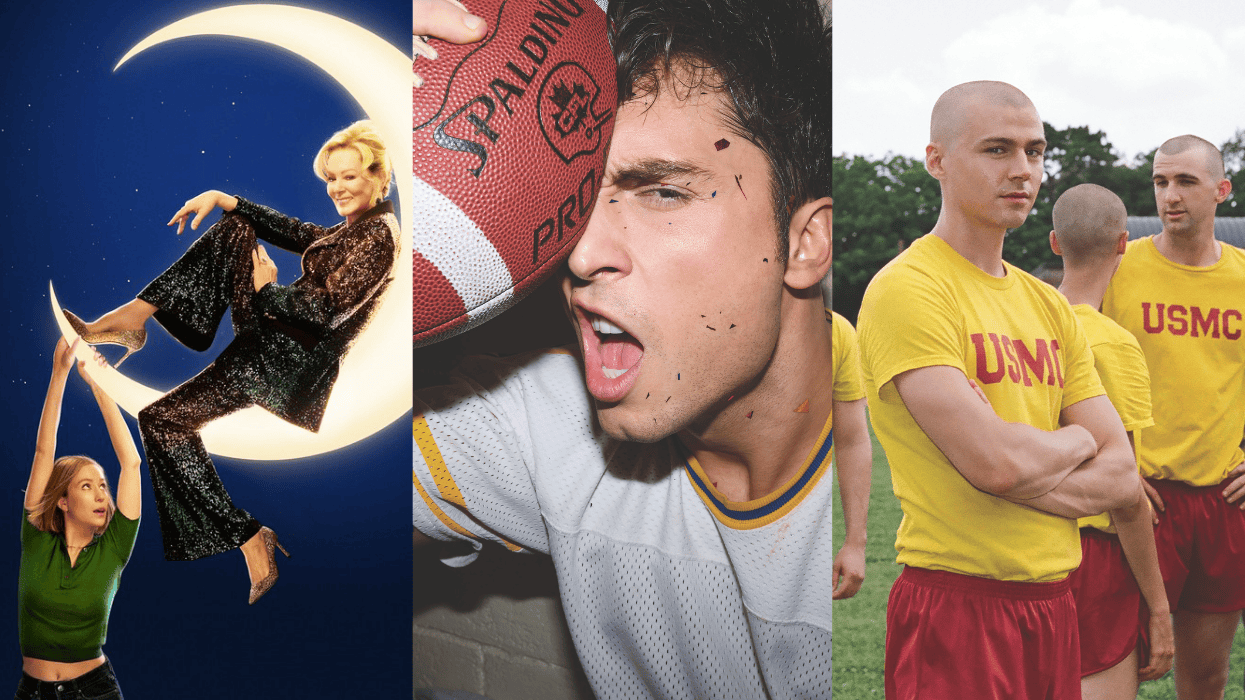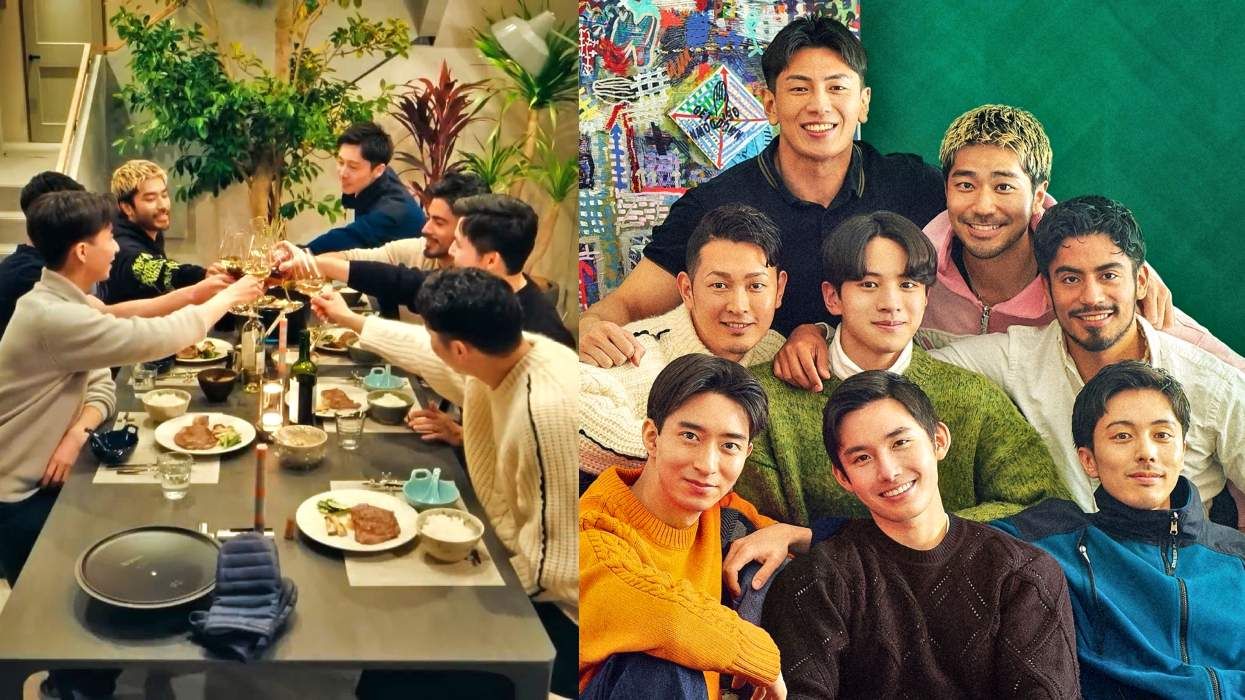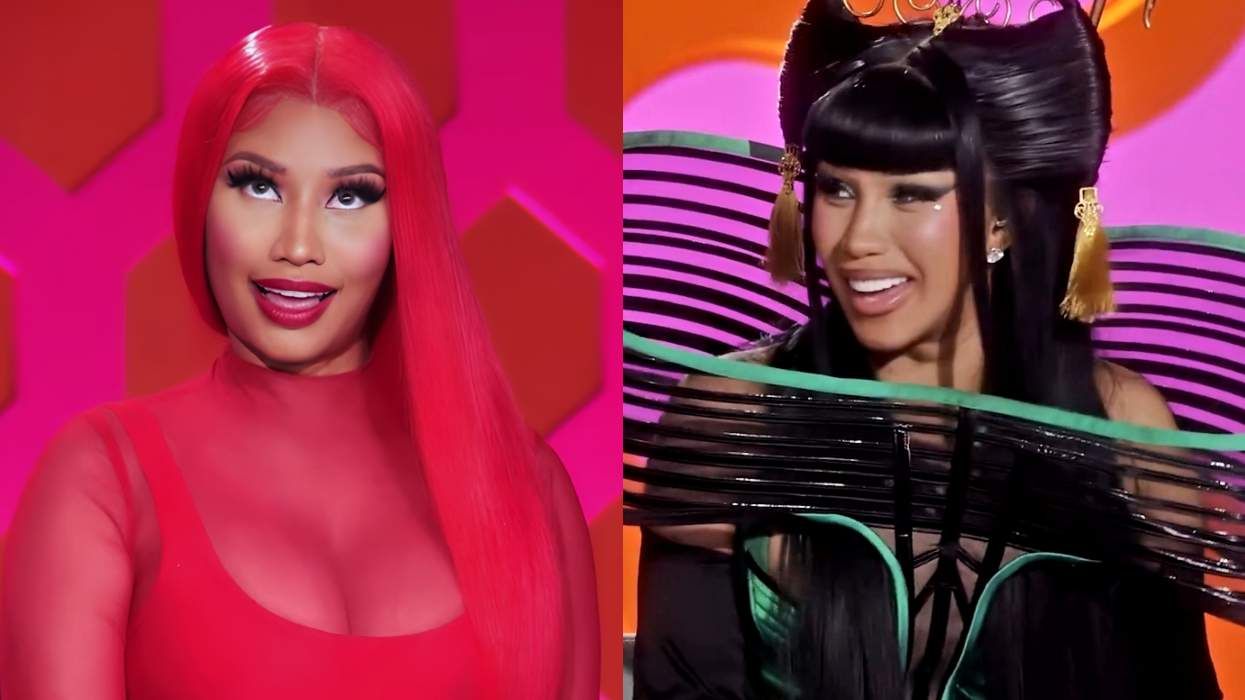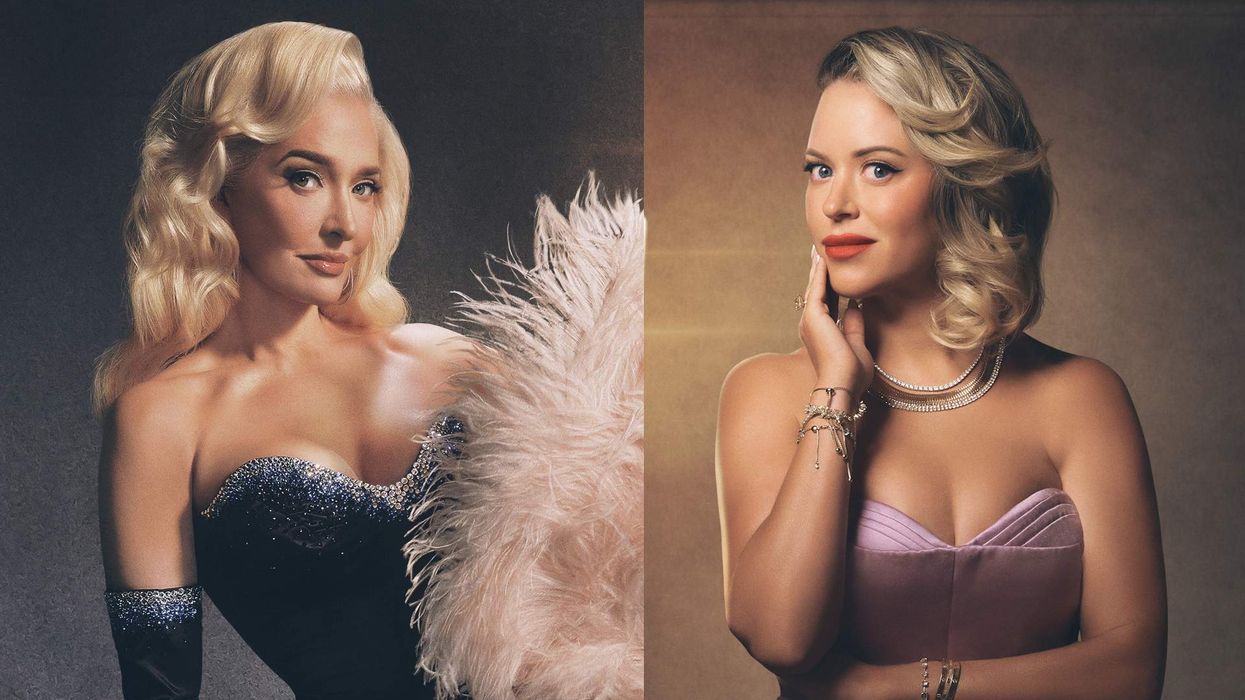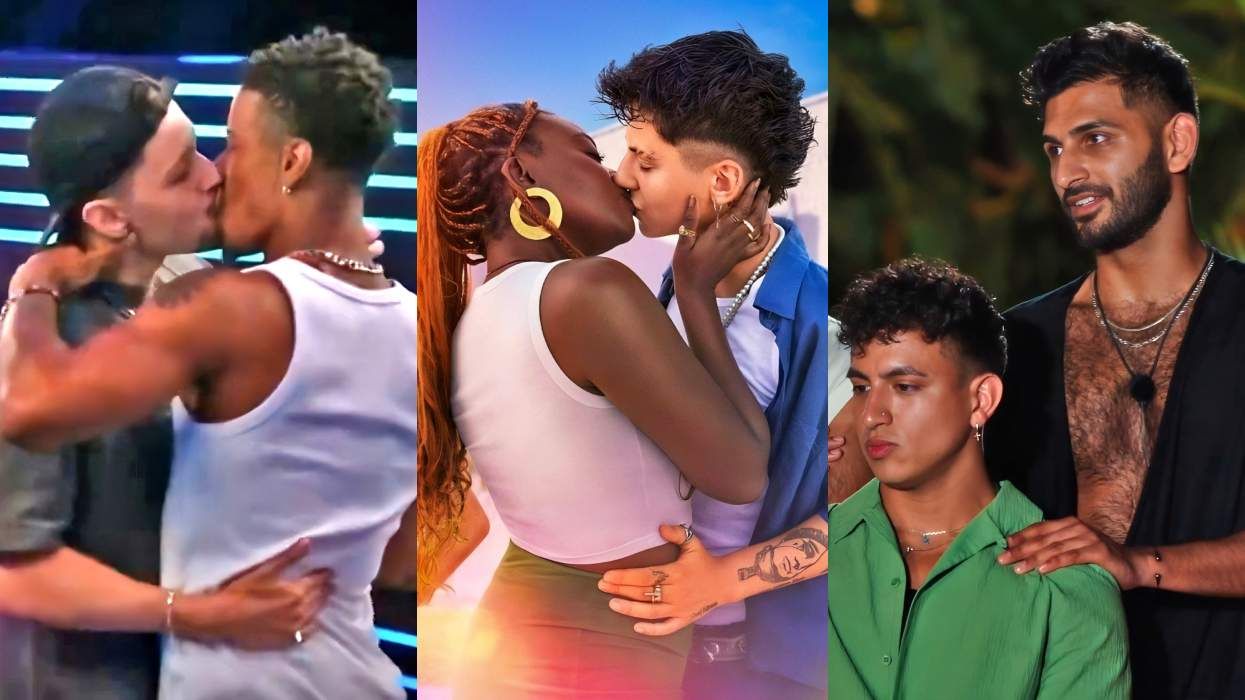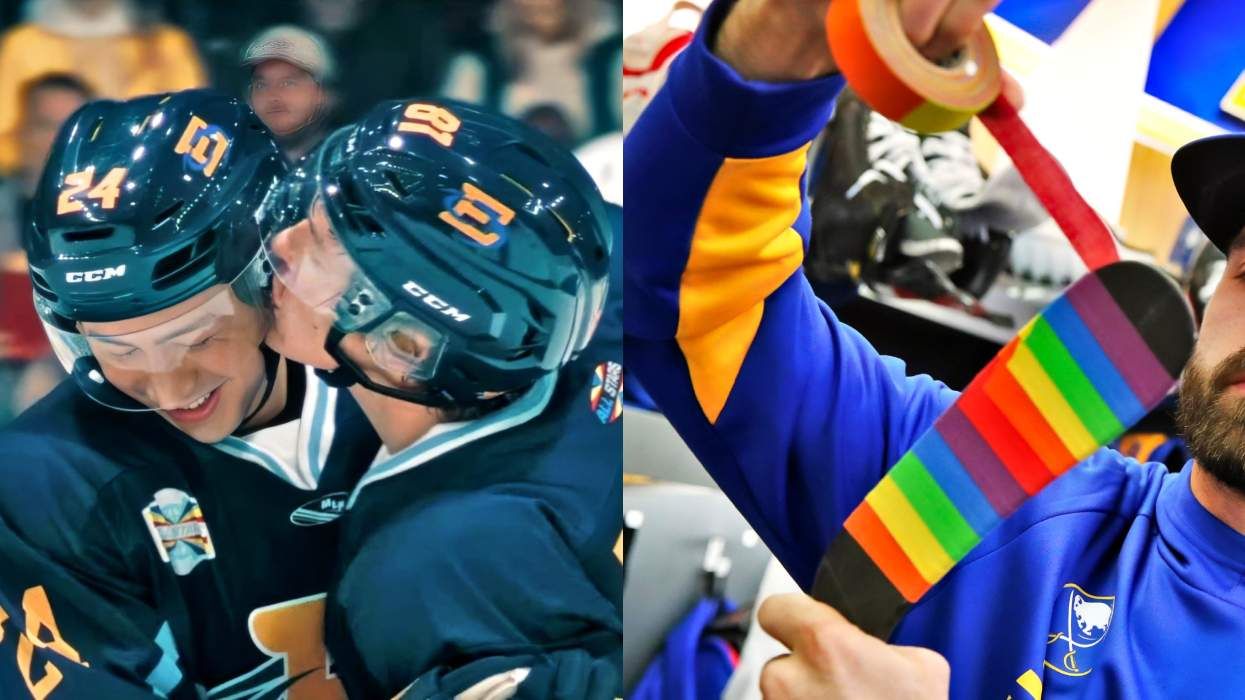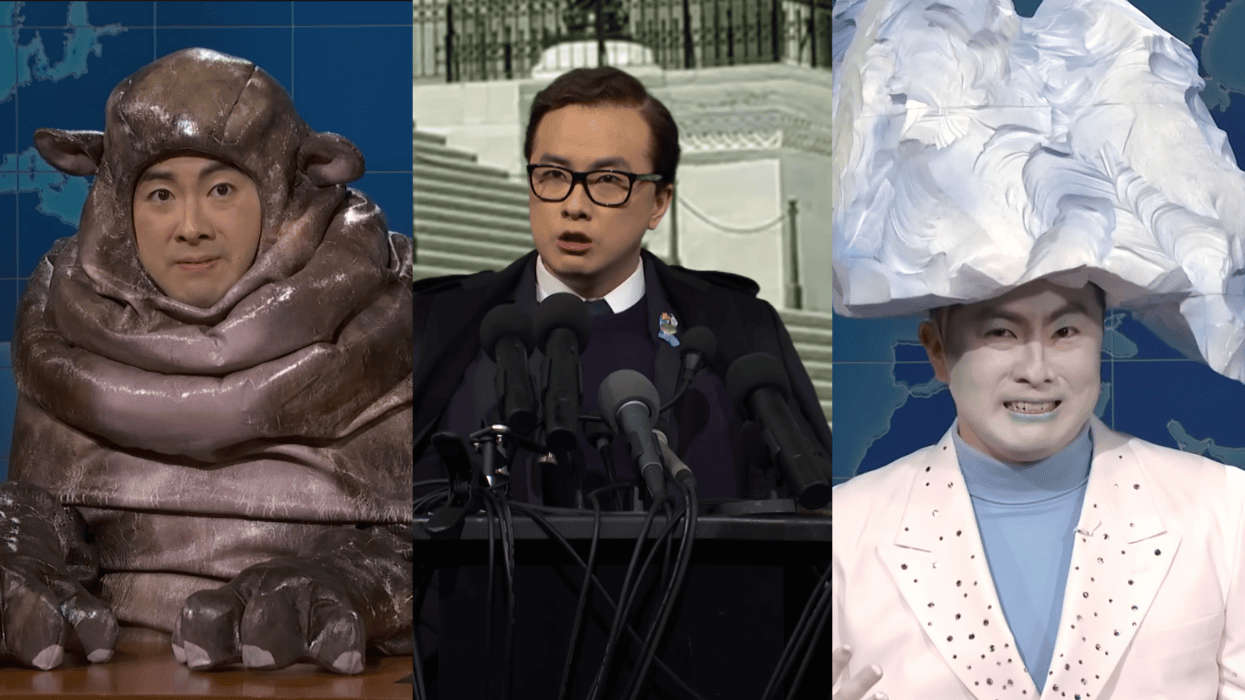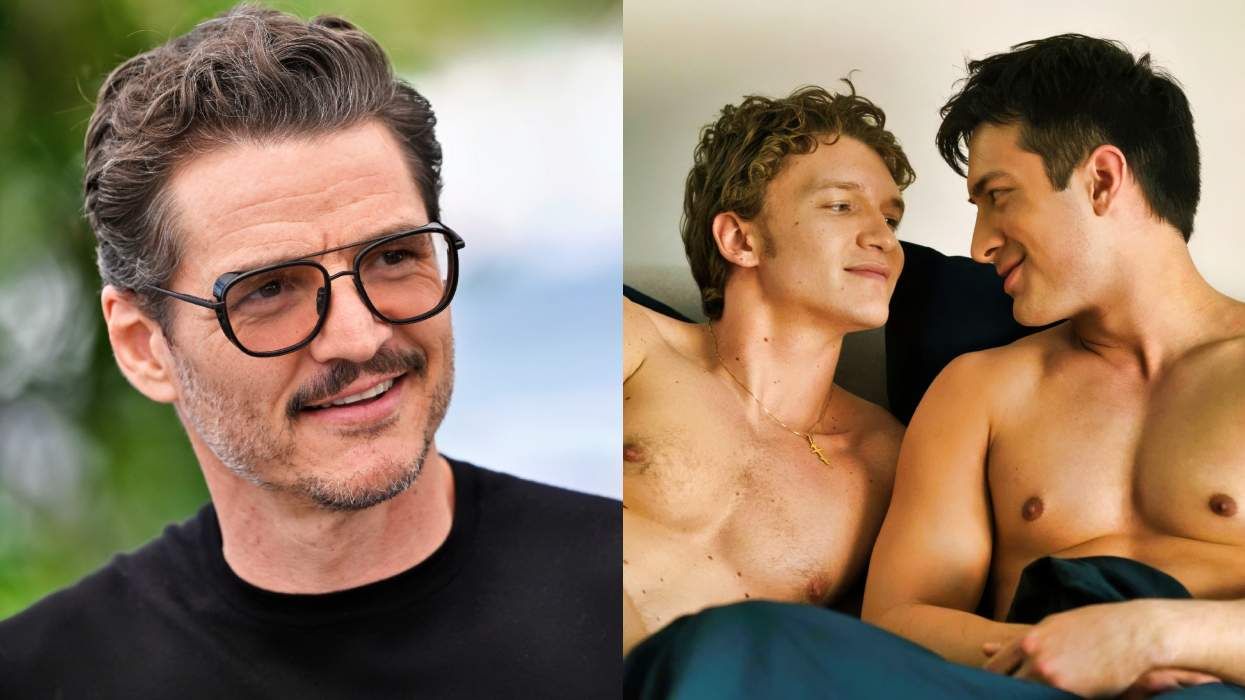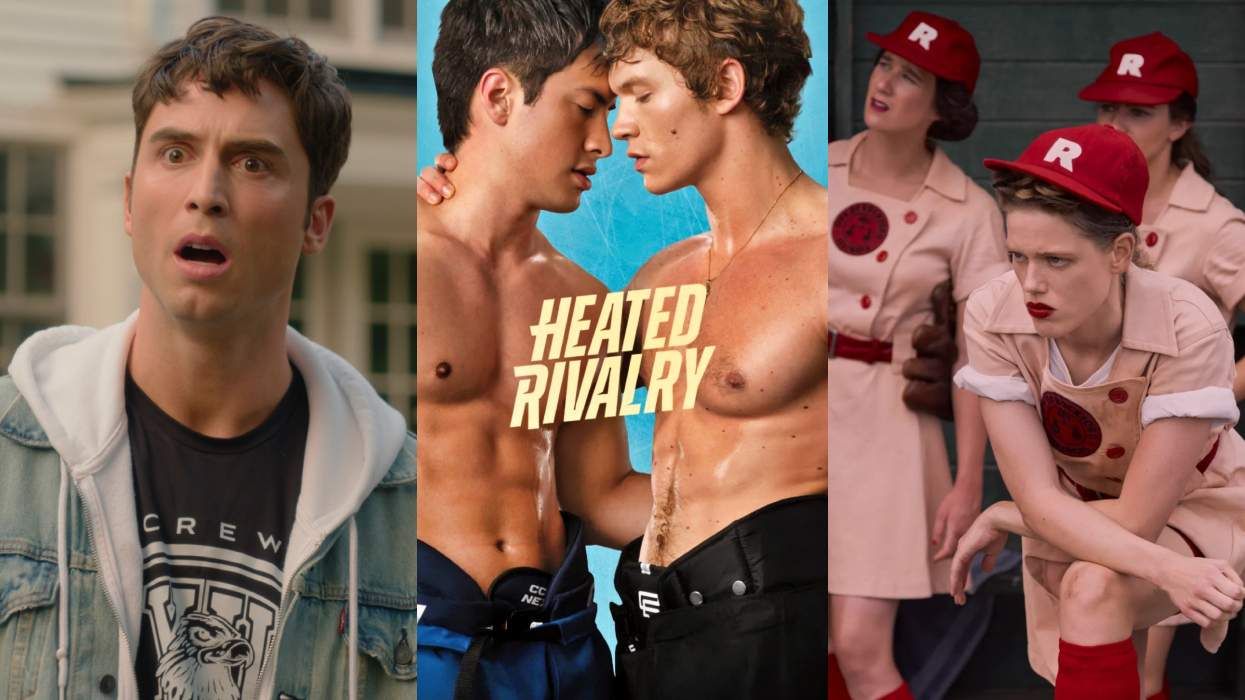Photography by Jeff Minton
On the seedier side of Hollywood Boulevard, among the decaying storefronts selling bongs, Marilyn Monroe T-shirts, and foil-wrapped packets of sex enhancement pills, stands a lavish green-and-brass Art Deco building restored to show off its original 1930s glamour. Bright orange flags festooned along its rooftop snap in the Southern California wind, giving the emerald structure a pirate ship vibe. Across the metal gates, stenciled in tangerine paint, reads the word wow. This is the office of World of Wonder, one of the most radical -- and peculiar -- production companies in show business today.
For over two decades, the filmmaking duo behind WOW, Fenton Bailey and Randy Barbato, who mostly create reality-based programs, have actively charted a course away from mainstream tastes, instead scouring the margins of culture. If you had to map the terrain they navigate, it would be the latitude between Tammy Faye Bakker and extremists who believe the world is run by a race of lizard people. A small but representative sampling of their titles includes: Party Monster, Pornography: The Secret History of Civilisation, Gay Republicans, 101 Rent Boys, TransGeneration, Angelina: Saint or Sinner?, The Hidden Fuhrer: Debating the Enigmas of Hitler's Sexuality, and 10 Kids 2 Dads.
"Networks love it when we pitch them," Barbato says, half-smiling, half-rolling his eyes. He's the cuddlier of the duo. Warm and effusive, he speaks with embellished vowels and a particular lilt that makes many sentences sound like open-ended questions. "They love us. Executives think we're a lot of fun. They love our quirky ideas, none of which they believe are marketable."
World of Wonder's more recent "marketable" offerings are OWN's Being Chaz, Sundance Channel's Girls Who Like Boys Who Like Boys, and Bravo's Million Dollar Listing -- they're often criticized for being too trashy, too zany, too marginal, too lowbrow, and too, well, gay.
SLIDESHOW: Images of World of Wonder Productions
"It can take three to five years of pitching a show or documentary before someone finally approves," Barbato laments. "That's how long it takes for the culture to catch up." It took 10 years to get their breakout hit, RuPaul's Drag Race, on cable; host network Logo turned the program down four times before picking up the series in 2009. Now Drag Race is the channel's most-watched series and has become -- perhaps grudgingly -- Logo's flagship show.
We are sitting in WOW's main conference room. The industrial space with exposed beams and cement floors is made a little cozier by splashes of whimsical decor: ceramic owl statues, golden piglet bookends, and needlepoint cushions in maroon and fuchsia. We sit beneath an oversized, 1950s-style paint-by-numbers canvas with the word yes transposed over the Arc de Triomphe.
Barbato points to the painting: "We have this in here to remind us that every pitch we've made started with no. No, no, no."
"For us," Bailey adds, "no is the beginning of yes."
Part of the struggle to get their subjects on air is Bailey and Barbato's specialty: freaks--freaks, outsiders, 16th-minute celebrities, conspiracy theorists, penis puppeteers, dictators, street hustlers, porn stars, hackers, homicidal club kids, gender deviants, furries, plushies, and Tori Spelling.
"We are into freaks who are engaged in the world, who have a joie de vivre. We are turned on by people who are tuned into a different frequency," Barbato says with unmistakable warmth in his voice. "We fall in love with all our subjects."
"Look, there are two ways to showcase freaks," Bailey says in a matter-of-fact tone. He has a little bit more of a taciturn style; his lightly hooded eyes usually give a deadpan stare. It's like being on the opposite end of an aristocratic gaze: enticing and a little intimidating (his British accent adds to the effect). "You can humiliate and make fun of the freak--put them in situations that exploit them--or you can celebrate the freak. We celebrate the freak."
Something fundamentally democratic exists when working with freaks. Take, for instance, David Icke and his followers, who believe the world is ruled by a race of 12-foot-tall lizard people. In World of Wonder's BBC series Secret Rulers of the World, a five-part documentary, journalist Jon Ronson spends weeks alongside Icke on his book tour. Though Icke's views are no doubt wacky, he's harmless. He preaches pacifism, and his followers tend to be older, New Age types whose love of sci-fi has somehow overlapped with their own political views. When Icke arrives in Canada, however, a number of liberal groups organize to shut down his tour. They make anonymous calls to bookstores and radio stations, branding Icke a racist (they charge that "lizard person" is a code word for "Jew" -- Icke refutes this). They show up to his lectures and drown him out. And at a book signing with no more than 30 people in attendance, they attempt to throw a pie in his face.
From right: Bailey in his home; Barbato in the World of Wonder office basement.
As laughable as Icke may initially be, by the second act of the documentary, the viewer is filled with a strange pity and protectiveness for him. "Who are we to say these people aren't allowed to be freaks and believe in a race of lizard people?" Bailey asks emphatically.
Many WOW productions could be classified as low-cost and high-camp. Once again, Bailey and Barbato don't bat a lash at this critique. "Here's the thing about camp: It's about exuberance -- that's all," Bailey says. "It's a refusal to hold back, to edit, or to water down for the sake of some sense of propriety, of acceptability. It's just, 'Fuck it.' I remember growing up and camp was just so marginal and so dismissed. I mean, I'm a person for whom The Rocky Horror Picture Show was a hugely important experience."
"And yet camp is pop is camp," Barbato muses. "And to dismiss pop or camp is moronic."
"It also stems from a cultural homophobia," Bailey adds. "But the disdain for camp is sort of not relevant anymore, because so much of what pop culture is is camp. Everywhere I look, it's camp. Duck Dynasty is camp."
Though it's entirely possible the two have been gnawing on the subjects of camp, trash, high-brow, low-brow, and no-brow since their grad school days at New York University's film school, they don't seem to tire of it. They're completely animated by today's discussion, with great peaks of volume and verve, as they deliver axioms on pop culture and aesthetics.
"Architecture is drag. Look at the Disney Concert Hall -- it's a clip-on!" announces Bailey.
Barbato adds, "The risk-averseness of television will be the death of television!"
While the two profess their devotion to "maximalism," there's a sensitivity that appears in much of their work; an entire swath of their catalogue is filled with quiet stories of the overlooked.
The Last Beekeeper follows three beekeepers whose work is in peril due to severe global and ecological changes. Ghetto Ballet focuses on Sibahle, a young ballet dancer from the slums outside Cape Town, as she competes for a once-in-a-lifetime shot at going professional with the South African Ballet Theatre (she doesn't get chosen). They also produced a documentary called Miss Navajo, which follows Crystal, a young woman who reluctantly participates in a Miss Navajo beauty pageant (she comes in second).
Even their more outsize subjects, like Tammy Faye Bakker, the embattled televangelist who appeared in one of the most notable documentaries produced and directed by the duo, 2000's The Eyes of Tammy Faye, are treated with a refreshing level of dignity. "Let me tell you," Barbato says with a touch of solemnity, "Tammy is with us and this company every day. She is a patron saint of World of Wonder. Making that film, whether it had done well or not, changed us."
In fact, Bailey and Barbato base the World of Wonder ethos on something Bakker said during filming: "We're all made from the same dirt."
Bailey and Barbato lived in Manhattan's then-drug-infested Alphabet City in the early 1980s. They were both attending NYU graduate film school and wanted to be famous, but were broke.
"The first time we met," Bailey recalls, "Randy was wearing a hand-painted shirt with Marcia Brady on it -- "
"Before Marcia Brady was cool!" Barbato interrupts. "Fenton was wearing Day-Glo yellow-green skin-tight leopard-y pants with high tops, with his hair up in a bun, Catherine Deneuve style. He was totally doing trans, androgynous, and punk rock. It was shocking!"
Barbato grew up in New Jersey. Bailey was raised in England. Each had encouraging parents. Each helped the other on his thesis film. Barbato's film, Robin, was a scripted drama based on a true story of a pre-op drag queen with whom he had grown up. He had his neighbors and parents play themselves, and his sister narrated the story. Bailey's film was a sci-fi fairy tale about a boy who flies to space and performs brain surgery called Hi, Mum. I've Gone to Space.
Eventually the two dropped out. Grad school was too expensive, and they found the nightlife scene in the East Village far more vibrant. They moved into an apartment a few blocks away from the Pyramid Club on Avenue A. Each had soul-crushing day jobs to clink away at happy hour: Barbato worked on Madison Avenue at an advertising agency specializing in real estate, while Bailey toiled on Wall Street, editing a newsletter about zero-coupon junk bonds.
At nightfall the two were either DJing or performing with their short-lived band, Fabulous Pop Tarts, in downtown dance clubs. They slunk around with nightlife fixtures like Sigue Sigue Sputnik and Michael Musto, and dutifully attended outrageous costume parties around the Village. Years later, in 2003, Bailey and Barbato would direct their first scripted drama based on one of the most lurid tales to come out of the motley downtown club scene: Party Monster, which chronicled the rise and fall of notorious club kid darling Michael Alig, who went to prison for the murder-dismemberment of a fellow scenester named Angel.
"We never bottomed out because we never got into drugs," Barbato recalls. "We also had to get up so early."
The duo's main addiction was late-night cable -- specifically the cavalcade of psychics, self-appointed sex therapists, Lithuanian karaoke stars, and drag queens who starred in their own first-come, first-served public access shows. Bailey and Barbato were inspired to do their own TV chat show called Flaunt It! TV. They filmed segments at the Limelight and had some "long-suffering" guests, like Quentin Crisp and Kate O'Toole. Flaunt It! TV ran four episodes before the two "collapsed in exhaustion followed by a period of deep depression," the two write in their book, The World According to Wonder.
They regrouped and came up with a new idea for a show: They would license all their favorite public access clips and bundle them into a single program. They sold the idea to Channel Four in the U.K. Manhattan Cable, as it was called, ran for four seasons.
Today those clips are called viral videos -- and you can find them replayed in all their ludicrous splendor on TV shows like Tosh.0 or The Soup.
"It sounds so corny, but we were fascinated with the democratization of media," Barbato says. "We were surrounded by talented friends who were considered outsiders -- there was no place for them."
While Bailey and Barbato found success producing "clipumentaries," the pair established themselves as filmmakers when they found their muse in fallen televangelist Bakker. "We were obsessed with her for some time," Barbato says. Along with her husband, Jim Bakker, Tammy Faye was forced to step down from her multimillion-dollar ministry and cable network when it was revealed that Jim had paid $287,000 in hush money to Jessica Hahn, an aspiring Playboy model who claimed Jim had forced himself upon her. After getting divorced and going broke, Tammy Faye struck out as a solo act and linked up with Bailey and Barbato, often participating in chat shows and pilots the two produced.
They were drawn to the force of her personality, her tiny raisin eyes embellished by those spider-leg lashes, and her tear-drenched outbursts into song. But the two were nervous that an evangelical like Bakker would recoil from their more flamboyant cohorts. And yet, she greeted every queen and queer with open arms.
"When we started on the film, a lot of people said to us, 'Oh, it will be great when you expose her,' " Barbato says, shaking his head derisively. "But she put it all out there. She was a reminder that you can be a little bit of a mess, a little bit of a wreck, but you can be fabulous doing it. She went out there every day with her problems all hanging out and she looked fabulous and, you know, put a smile on her face and others' faces. That's such a universal message people should take: That we all have problems, we are all messy, we are all so lucky to be alive."
The World According to Wonder book launch party-cum-WOW 21st birthday bash is being held on a pre-holiday December evening at a banquet hall in Universal Studios, on a street decorated with a faux-London veneer that was lined with paid carolers hours earlier. The line is starting to thicken with queens, dwarves, and scores of immaculately dressed gay men. Eventually, the room will swell with well-wishers and a few aesthete go-go dancers in elf hats. Wowlebrities (as they are called affectionately within the company) like La Toya Jackson, Wayne Brady, and Perez Hilton will mug for the red carpet cameras. James St. James, the author of Disco Bloodbath, the book on which Party Monster is based, dressed in a crimson plaid cape with a touch of rouge on his lips, will sweep through the crowd, promiscuously dispensing air kisses and hugs.
But for now it's just a few publicists and photographers milling inside the cavernous venue. In the corner of a completely empty dance floor, a slender black man in a perfectly tailored ash gray skinny suit and a coral-colored button-up is dancing by himself. He spins, arms open, then closed, keeping his solitary rhythm. It's RuPaul. He's DJing tonight's party and will host a mini drag set in a few hours. Right now he seems to just be warming up.
How is it that a drag act like RuPaul can, after spending over a decade in relative obscurity, shante back onto cable with a hit show? Just a few years ago, when RuPaul released a new dance album and solicited Entertainment Weekly for a review, the magazine refused but asked him for a comedic blurb to insert in a fashion article. He likened the experienced to "a black person being invited to a party, but only if they'll serve."
SLIDESHOW: Images of World of Wonder Productions
Bailey and Barbato first set eyes on RuPaul one sultry night in Atlanta in the mid-'80s. According to their book, the two were walking down the street when they saw a 6-foot-tall drag queen dressed in "shoulder pads, a jock strap, and a frightwig." RuPaul was wheatpasting flyers to telephone poles that announced RUPAUL IS EVERYTHING.
"We believed it," Barbato says. "We wanted to make good on that promise." (The entry on RuPaul in the WOW book reads, "It wasn't just the towering inferno of his frame; behind the mascara was a soul as gentle and wise as E.T.")
RuPaul asked the duo to manage his music career, and they shot the video for his track "Supermodel" on a shoestring budget. RuPaul became a sensation: he released a hit dance single in 1993, and landed a MAC cosmetics modeling contract and a gig hosting the Daytime Emmys. In 1996, Bailey and Barbato produced RuPaul's chat show, which aired on VH1 for two years. Then came the Bush Era and the space for performers like him got pushed back into the margins. Bailey and Barbato continued to pitch shows in different formats for RuPaul's comeback but nothing took, not until Tom Campbell, director of series programming for MTV, came to work for WOW.
"Tyra Banks has been stealing RuPaul's act for years!" Campbell, now head of development for WOW, says. "RuPaul just stole it back!"
Campbell's devotion to RuPaul was cemented in 1993, when he attended the march for gay rights in Washington, D.C. When hundreds of thousands of attendees pooled in the Washington Mall, there were no real leaders galvanizing the group. "There was Jesse Jackson, Cybill Shepherd, and some well-intentioned lesbians singing folk songs," Campbell recalls, "and everyone was like, 'Well, OK, that's nice.' Then they announced RuPaul would be speaking, and the crowd freaked out. We all got to our feet, and Ru got up there and gave this totally poised, funny, heartfelt speech." RuPaul concluded his remarks that day by pointing to the White House and declaring, "We're gonna paint this motha pink!"
The first thought that came into Campbell's head upon hearing the audience roar was, It takes a drag queen to bring us together.
The trio reconceived the proper vehicle for RuPaul and pitched Drag Race around town. "Drag is what television was made for," Barbato insists. Elements of what a reality drag show could look like were already percolating in pop culture with Project Runway, American Idol, and America's Next Top Model, and the team at WOW thought culture was ready to catch up.
"The reality show competition genre was sort of sputtering out," Campbell recalls. "So we wanted to make it fascinating without being inorganic." I ask Campbell what he means by "inorganic."
"Booze and pills," Campbell says flatly. "You know, if you allow people to do all the booze and pills they want off camera and film the results, you can have a reality show. We didn't want to do that sort of thing."
Anyone who's seen the show knows that its watchability stems from an artful blend of camp and pathos. Unlike America's Next Top Model, a competition reality show steeped in such uncritical self-regard that it can only be enjoyed ironically, Drag Race is filled with wry, subversive humor; it's a reality show that successfully makes fun of other reality shows. While Tyra says "Smile with your eyes" with a seriousness usually reserved for Talmudic scripture, RuPaul does a Cecil B. DeMille flourish and commands, "Don't fuck it up!" Drag Race also comes with some sincere emotional moments you wouldn't see on other reality shows. How could it not? The contestants are from a peripheral underclass -- they're gender renegades who have had to create new families plucked from karaoke shows and dive bars.
"We didn't want to pitch the show as bitchy gays; we wanted to do the art of drag," Campbell says. "The truth is, we pitched it everywhere. At that moment in time, Logo had not really been enthusiastic about being that gay." Sometimes, Campbell admits, he still feels Logo executives regard the show as too gay. (Logo abandoned nearly all of its gay-themed programming last spring. "Culturally, we're past the tipping point," Lisa Sherman, Executive Vice President of Programming, said of the shift. "For gays and lesbians, it's part of who they are, but they don't lead with it, because many are leading fully integrated, mainstream lives.")
The tension between "assimilated suburban gays," as Bailey and Barbato call them, and the "freaky, fishy," gays has been a constant issue with their work. They take heat from both sides.
Then there's the complaint that shows like Drag Race are sanitizing the gay scene, something James St. James thinks about.
"Sometimes I worry that we lose a part of our culture by trying to assimilate," he says on the day I visit the WOW offices. St. James edits and writes for the WOW Report, the production company's daily blog (his current obsessions: K-pop boy bands, the British drag artist Daniel Lismore, and Tumblr GIFs). "Don't get me wrong," he says, crossing his legs, "I'm not some Miss Havisham wasting away at her keyboard. I couldn't be happier being here." He leans back in his office chair. "But, you know, sometimes I feel like the old queen, like Buddy Cole in that Kids in the Hall sketch, trying to tell the younger generation about Stonewall."
Sharon Needles, the gothic-zombie drag queen and winner of Drag Race's season 4 crown, applauds the show for opening up the culture to queens, but counters, "The unfortunate side is that it whitewashes and PG-13's something that, in my opinion, should remain freaky in the underground."
Though Barbato and Bailey are functionally part of the entertainment industry, they're adamant about not sacrificing the freakiness of gay culture to the mainstream. In 1996, GLAAD created the Fairness Awards for people who were presumably fair in their portrayals of the LGBT community. Barbato and Bailey, who won it in 1998, contend in their book that the award had much more to do with who "could fill the most seats at the Four Seasons in Beverly Hills." Nevertheless, the two seized the opportunity for some real talk during their acceptance speech.
"Being gay is not about being normal," Bailey said at the podium. "Gay is gay. Gay is not the same as everyone else. Gay is different.... We are all queer in our own special way. The responsibility of being gay, then, is not about sameness, it's about difference. And until we embrace the zaniest, freakiest, and gayest among us, there can be no fairness."





